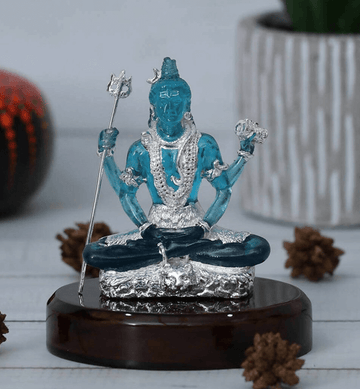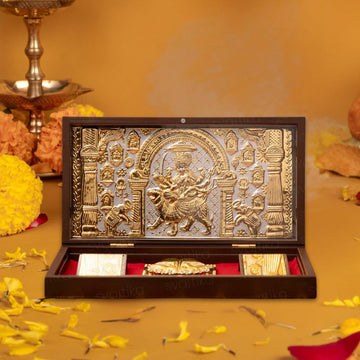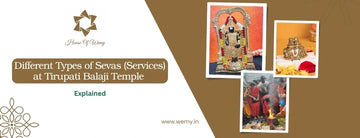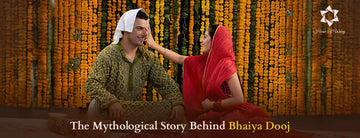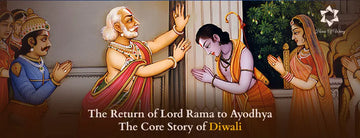Explore the Divine Rhythms of Tirumala: From Darshana to Seva
In a world rushing towards instant gratification, there’s something profoundly grounding about standing in line for hours, palms folded, heart racing not for fame, fortune, or power, but for a fleeting moment before the divine.
That’s what Tirupati offers.
It's not merely a temple, it is a pilgrimage of faith. A realm where supplications do not have to be cognizant and self-aware, and where countless tears tumble for no pragmatic reason, and where our infiniteness is perceived and understood. From all Tirupati devotional services to every Darshana, everything with the idol has a holy story to reflect upon and realize, all intimately related to the spiritual aspect of India.
If you are a follower, a seeker of spirit, or an individual trying to find the tranquil place in the sea of worldly expectation and encouragement, awareness of the Seva types Tirumala can unlock an entirely unfamiliar sense of devotion.
Hindu Temple Sevas: One of the Pillars of Worship
In the practice of Sanatana Dharma and Seva, it is much more than simply temple rituals India, it is our sacred duty. For the soul, it is an offering to the divine without expectation. Seva appears in the Bhagavad Gita and is known as karma yoga or an offering of actions as devotion. Seva at temples is an extension of this principle and manifests itself in multiple ways. From waking the deity accompanied by chanting, to decorating Him with fresh flowers, Seva is performed with bhakti (devotion) and shraddha (faith) by the devotee; it is part of the worship service.
Tirupati Balaji Temple services are taken to another level altogether. Here, Sevas go beyond rituals and are an experience, including all senses. They are the living example of archana bhakti (devotion through worship) in that each devotee is added to the divine household, serving their Lord in humility and love.
Tirupati Balaji Traditions

The Tirupati Balaji is an establishment built upon, and is sustained through centuries of continuous worship, where individuals reach the divine not as abstractions, but as a living Guru and Deity - feeding, sleeping, bathing, and blessing devotees as His daily duty.
The rituals in this system adhere to the Vaikhanasa Agama, one of the oldest temple traditions (sampradayas) in India, that expresses every minute of time in terms of Lord Venkateswara and his responsibilities towards all of his dependents. Designed from Suprabhatam (morning awakening) to Ekantha Seva (bedtime), this deity is treated with all the frenzy of his devotee's passion and empathy.
This tradition is not just retained by the priest but by all individuals who partook in Sevas and Darshanas, and everyone who devoted themselves was part of a highly complex household taking care of the Lord.
Sevas vs. Darshana at Tirupati Balaji Temple
In Tirupati, both Seva and Darshana serve different yet interconnected purposes:
- Darshana means “divine viewing.” It’s the moment when the curtain parts, and the Lord’s gaze meets yours. For many, that brief second offers more healing than years of therapy.
- Seva, on the other hand, is participation in divine service. It involves Balaji temple offerings, rituals, and spiritual duties, witnessing the Lord not just as a distant deity, but as someone you care for, serve, and connect with intimately.
Darshana is grace received.
Seva is grace earned through devotion.
Tirupati Darshan Types
Each type of Darshana is designed with inclusivity and devotion in mind:
- Sarva Darshan (Free Darshan): Open to all, this Darshan may involve long queues but remains the most democratic path to the divine. The wait becomes a spiritual sadhana in itself.
- Special Entry Darshan (₹300 Darshan): Ideal for those with limited time, it offers a structured route without compromising on spiritual intensity.
- Divya Darshan: Reserved for devotees who climb the Tirumala hills on foot, either through Alipiri or Srivari Mettu. A beautiful reward for physical and spiritual perseverance.
- VIP Break Darshan: Designed for officials or those with recommendations. Offers a quieter, less crowded experience of the Lord.
- Senior Citizen/Physically Challenged Darshan: Ensures that age or ability doesn’t stand between a soul and its Lord.
Each darshan type upholds the sanctity of the temple while offering various ways for the devotee to connect.
Tirupati Sevas List: Daily, Weekly, and Periodic Sevas
1) Daily Sevas
These Sevas mark the rhythm of Lord Balaji’s day and are performed with divine consistency:
-
Suprabhatam: The Lord is gently awakened with Vedic hymns, echoing love and reverence.

-
Thomala Seva: Fresh garlands made of tulsi, roses, and fragrant flowers are offered, a ritual that signifies welcoming and beautification.

-
Archana: A recitation of the Lord's 108 names, paired with tulsi leaves. This is often accompanied by personal prayers whispered from the heart.

-
Ekantha Seva: The Lord is put to rest, and lullabies are sung. A quiet, intimate goodbye till dawn.

These Sevas represent care for the deity, not just worship, portraying the Lord as a living presence to be served and cherished.
2) Weekly Sevas
Each day of the week holds special spiritual offerings:
- Monday: Vishesha Pooja: Involves Abhishekam, decoration, and naivedyam, seeking blessings for health and fortune.
- Tuesday: Ashtadala Pada Padmaradhana: 108 golden lotus flowers are placed at the Lord’s feet, a rare and soul-stirring experience.
- Wednesday: Sahasra Kalasabhishekam: Thousand pots of sanctified water are offered. Ideal for devotees praying for cleansing and renewal.
- Thursday: Tiruppavada Seva: A massive food offering is laid before the Lord, seeking forgiveness and abundance.
- Friday: Abhishekam: The main deity is bathed with sacred substances like milk, honey, and sandalwood. A visual and spiritual feast.
Each of these Sevas is deeply symbolic, linking the rhythm of the week to celestial grace.
3) Periodical Sevas
These are performed on specific lunar days or annually, often connected to mythology and cosmic rhythms:
- Pavitrotsavam: Atonement ritual to purify the temple from any errors in daily worship. A reminder of human humility before the divine.
- Abhideyaka Abhishekam: Performed to preserve and protect the Utsava Murthy. Offers spiritual shielding for devotees and divine idols alike.
- Padmavathi Parinayam: Celebrates the celestial wedding of Balaji and Goddess Padmavathi. A grand festival of union and love.
These Sevas immerse devotees in mythological events, making them active participants in sacred stories.
Significance of Lord Balaji Idols in Different Sevas
The Tirumala temple has several forms of the Lord, each with a distinct purpose:
- Moolavar (Main Deity): The immovable, Swayambhu (self-manifested) idol enshrined in the sanctum. He is the core of all rituals.
- Utsava Murthy: Used during processions and festivals. This form brings the Lord into public view, symbolizing accessibility and divine outreach.
- Bhoga Srinivasa: Made of silver, this idol shares the Lord’s rest chamber. All Sevas involving food and rest are performed in this form.
- Koluvu Srinivasa: Presides over the temple’s daily accounts. He is the divine administrator, blending spirituality with responsibility.
Each idol reflects a particular bhaava (emotion) and aspect of Lord Venkateswara, making the temple rituals more human, more relatable.
Balaji in Our Homes: A Presence Beyond the Hills
You don’t have to climb Tirumala to feel the presence of Lord Balaji. Lord Balaji Idols in your home can recreate a space of calm, faith, and protection. It isn’t just a decor piece, it’s an anchor.
Whether placed in your pooja room, your living space, or gifted during weddings and grihapravesh ceremonies, the idol becomes a source of emotional and spiritual grounding.
At Wemy, we’ve seen how handcrafted Balaji idols bring families together during festivals, help children learn about Sanatana Dharma, and allow those far from India to stay close to their roots.
Final Thoughts
To serve the divine is to walk alongside it. The Sevas of Tirumala aren’t simply religious rituals, they are timeless invitations. Invitations to reconnect, reflect, and realize the divine within and around us.
Perhaps the next time you fold your hands before Lord Balaji idols, whether in Tirumala or your own mandir, you’ll feel something stir a memory of being part of something eternal.
How would you like to serve the divine today?

